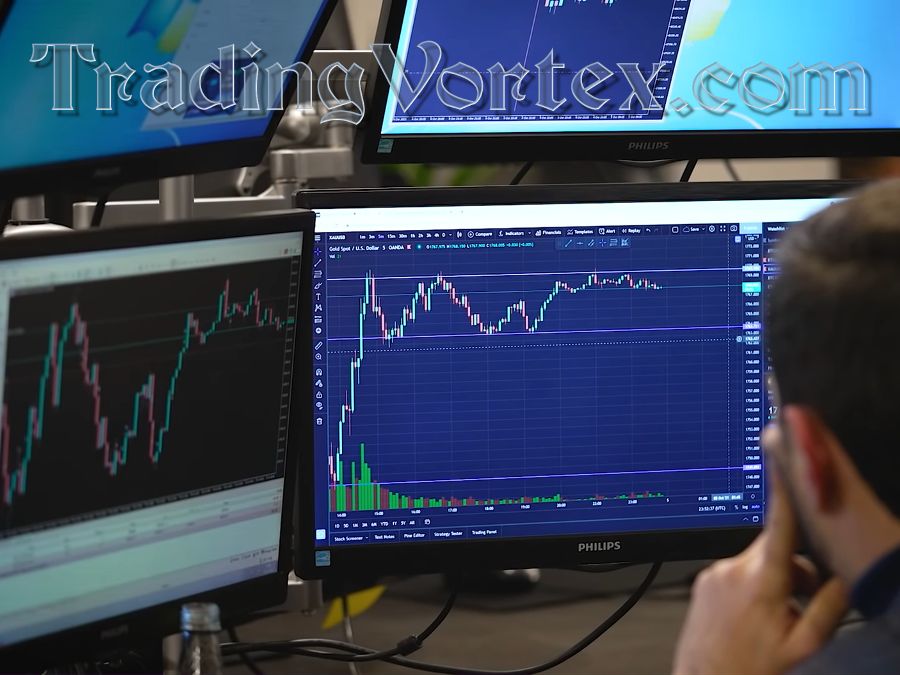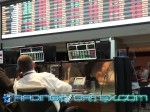Table Of Contents:
- What is CFD Trading and Why It's Ideal for Beginners?
Understanding CFD Trading:
What Are CFDs?
How Does CFD Trading Work?
CFD Trading Strategies for Beginners:
Choosing a CFD Broker:
Practicing CFD Trading:
Common Mistakes to Avoid:
Tax Implications of CFD Trading:
CFD Trading vs. Traditional Investing:
Mastering CFD Trading: Your Journey Begins Here.
What is CFD Trading and Why It's Ideal for Beginners?
Welcome to the world of CFD (Contract for Difference) trading, a fascinating financial instrument that has garnered immense popularity, especially among beginners in the world of trading and investing. In this introductory section, we will embark on a journey to demystify CFD trading, providing you with a foundational understanding of what it is and why it's the ideal choice for newcomers in the financial markets.
CFD trading is a versatile and dynamic financial tool that allows individuals to speculate on the price movements of a wide range of assets, including stocks, indices, commodities, and currencies, without actually owning the underlying assets. Unlike traditional investment methods, CFDs enable you to profit from both rising and falling markets, offering unparalleled flexibility.
The answer lies in its accessibility and simplicity. CFDs are designed to be user-friendly, making them an excellent starting point for those new to trading. You don't need to be a financial expert or have a substantial capital to begin; anyone with an interest in financial markets can get started.
So, whether you're a complete novice looking to embark on your trading journey or simply seeking to broaden your financial horizons, this article will serve as your essential compass. By the time you reach the end, you'll have a firm grasp of CFD trading and be ready to take your first steps in this exciting world of financial opportunity.
Understanding CFD Trading:
Exploring CFD Trading: A Beginner's Guide.
To embark on a successful CFD trading journey, it's essential to have a solid grasp of the concept. In this section, we'll delve deeper into the world of CFD trading, providing you with an invaluable beginner's guide.
One of the key attractions of CFD trading is the ability to profit from both rising and falling markets. When you believe an asset's price will increase, you can go long (buy), and when you anticipate a decline, you can go short (sell). This flexibility enables CFD traders to capitalize on diverse market conditions.
Traders are also drawn to the leverage that CFDs offer. Leverage allows you to control a more substantial position with a relatively small initial investment. While this amplifies the potential for profits, it's crucial to remember that it also magnifies potential losses. Thus, managing leverage is a skill that all CFD traders must master.
Benefits and Risks of CFD Trading for Beginners:
As a beginner, it's essential to weigh the advantages and potential risks associated with CFD trading. Let's explore both sides of the coin:
Benefits CFD Trading:
- Diverse Asset Class: CFDs offer exposure to a wide range of assets, including equities, indices, commodities, and cryptocurrencies, providing ample opportunities for diversification.
- Leverage: CFDs allow you to control a more substantial position with a relatively small capital outlay, potentially magnifying your returns.
- Long and Short Positions: CFDs enable traders to profit from both rising and falling markets, offering flexibility and hedging opportunities.
- No Ownership Required: CFD traders do not need to physically own the underlying assets, simplifying the trading process.
- Access to Global Markets: CFDs provide access to global markets, allowing you to trade assets from various international exchanges.
Risks CFD Trading:
- Leverage Risk: While leverage can amplify profits, it can also magnify losses, leading to significant financial exposure.
- Market Volatility: The fast-paced nature of CFD trading can expose traders to substantial market volatility, increasing the risk of sudden and unexpected price swings.
- Counterparty Risk: CFD trading involves contracts with brokerage firms, and if a broker becomes insolvent, there may be a risk of losing your funds.
- Risk of Overtrading: The accessibility and flexibility of CFDs can tempt beginners to overtrade, potentially leading to losses.
In this section, we've laid the foundation for your CFD trading journey by introducing you to the basics of CFDs and outlining their potential benefits and risks. As we move forward, we'll delve deeper into the mechanics and strategies that will empower you as a beginner in the world of CFD trading.
What Are CFDs?
CFDs Explained: A Primer for Beginners.
Before diving into the intricacies of CFD trading, let's gain a solid understanding of what CFDs are and how they work. "CFDs, or Contracts for Difference, are financial derivatives that derive their value from an underlying asset". These assets can encompass a wide range of financial instruments, including stocks, indices, commodities, and foreign exchange.
At its core, a CFD represents a contract between a trader and a broker. In this contract, the two parties agree to exchange the difference in the asset's price from the time the contract is opened to when it is closed. Unlike traditional investing, CFD traders do not physically own the underlying asset; instead, they speculate on the price movement of the asset. This means that CFD trading allows you to profit from both rising and falling markets.
Key Features of CFDs for Novice Traders:
As a beginner, it's crucial to grasp the fundamental features of CFDs that make them a unique and appealing trading instrument:
- Leverage: CFDs are well-known for their leverage. With leverage, you can control a larger position with a relatively small upfront investment. While this amplifies the potential for profits, it's essential to remember that it also magnifies potential losses. Managing leverage is a skill that all CFD traders must hone.
- Wide Asset Selection: CFDs offer access to a broad spectrum of assets, allowing traders to diversify their portfolios. You can trade CFDs on stocks, indices, commodities, currencies, and more, giving you the freedom to explore different markets.
- Flexibility: CFDs provide traders with flexibility in terms of trading strategies. You can go long (buy) if you anticipate an asset's price will rise or go short (sell) if you expect a price decrease. This versatility enables you to capitalize on various market conditions.
- No Ownership Required: Unlike traditional investments, CFD traders do not need to own the underlying asset. This simplifies the trading process and reduces administrative burdens.
- Global Markets: CFDs provide access to global markets, allowing you to trade assets from exchanges around the world. This opens up a world of opportunities for traders interested in international markets.
Managing Risk in CFD Trading for Beginners:
While CFD trading offers exciting prospects, it also comes with its share of risks. As a novice trader, managing risk is paramount to your success. There are several strategies to help you mitigate potential pitfalls, including setting stop-loss orders to limit losses, diversifying your portfolio, and thoroughly researching the assets you intend to trade.
Understanding the inner workings of CFDs is the first step in your journey towards becoming a successful trader. In the following sections, we'll explore how to initiate and manage CFD trades, develop effective trading strategies, and navigate the world of CFD brokers, all designed to equip you with the knowledge and skills needed to excel in CFD trading.
How Does CFD Trading Work?
Initiating CFD Trading: A Beginner's Starting Point.
To begin your journey in CFD trading, it's essential to establish a solid foundation. This section serves as your starting point, offering guidance on essential considerations and initial steps.
Selecting Assets in CFD Trading:
- Choose Familiar Territory: As a beginner, it's wise to start with assets you're familiar with or have a keen interest in. This will make it easier to analyze and anticipate market movements.
- Conduct Research: Take the time to research your chosen assets. Understand the factors that influence their prices and the broader market conditions that may impact them.
Leveraging CFDs for Beginners:
Approach Leverage Cautiously: While leverage can magnify profits, it can also amplify losses. As a novice trader, consider starting with minimal or no leverage. As you gain experience and confidence, you can gradually adjust your leverage settings.
Monitoring and Managing CFD Trades:
Once you've opened a CFD trade, the next step is to monitor and manage it effectively. CFD trading requires active attention to market movements and a keen eye on your positions. Here are some key aspects to consider:
- Stop-Loss Orders: Implementing stop-loss orders is a risk management strategy. These orders automatically close your position when the market moves against you, limiting potential losses. Novice traders should always consider using stop-loss orders.
- Take-Profit Orders: Take-profit orders allow you to set a target price at which your trade will automatically close, locking in your profits when the market moves in your favor.
- Trailing Stop Orders: Trailing stops are dynamic stop-loss orders that move with the market price. They can protect your gains by allowing your position to stay open as long as the market is moving in your favor.
Closing CFD Positions: A Beginner's Walkthrough.
Closing a CFD position involves reversing your initial trade. To close a CFD position, you simply enter a trade in the opposite direction of your original position. If you initially went long, you now go short, and vice versa. Keep in mind that the price at which you close your position determines your profit or loss.
Calculating Profits and Losses in CFD Trading:
The calculation of profits and losses in CFD trading is a critical aspect of understanding how your trades perform. It's essential to grasp the following components:
- Entry Price: The price at which you initially entered the trade.
- Exit Price: The price at which you closed the trade.
- Position Size: The number of CFDs you traded.
- Leverage: The multiplier used to control a larger position.
- Spread: The difference between the buy (ask) and sell (bid) prices of the CFD.
- Financing Costs: Costs associated with holding positions overnight.
In this section, we've explored the essential steps involved in CFD trading, from selecting assets and leveraging positions to monitoring, managing, and ultimately closing your CFD positions. The ability to calculate your profits and losses accurately is a vital skill for CFD traders. As we move forward in this guide, we'll delve into specific strategies and considerations to enhance your proficiency in CFD trading.
CFD Trading Strategies for Beginners:
Long and Short CFD Trading Strategies for Novices:
As a novice CFD trader, it's essential to understand and deploy both long and short trading strategies to adapt to various market conditions. Here, we'll explore these strategies:
Long Trading Strategy:
- Trend Following: This strategy involves identifying and trading with the prevailing market trend. Novice traders can use technical analysis tools, such as moving averages and trendlines, to spot trends and open long positions when the market is in an uptrend.
- Breakout Trading: In breakout trading, traders look for key levels of support or resistance that, when broken, signal a potential price movement. As a beginner, it's important to combine breakout trading with risk management strategies.
Short Trading Strategy:
- Contrarian Trading: Contrarian traders go against the market sentiment. This strategy involves identifying overvalued assets in downtrends and opening short positions. Novice contrarian traders should exercise caution and rely on thorough research.
- Swing Trading: Swing traders aim to capitalize on short- to medium-term price swings. This strategy requires identifying price patterns, chart patterns, and technical indicators. As a beginner, you can use swing trading strategies to manage risk and time your trades.
Risk Management Strategies in CFD Trading for Beginners:
Managing risk is a critical aspect of CFD trading for beginners. Here are some risk management strategies to consider:
- Set Stop-Loss Orders: Always use stop-loss orders to limit potential losses. Determine a level at which you're comfortable with the loss and set your stop-loss order accordingly.
- Diversify Your Portfolio: Avoid putting all your capital into a single trade. Diversifying your portfolio across different assets can help mitigate risk.
- Position Sizing: Determine the size of your positions based on your risk tolerance and overall portfolio size. Novice traders should avoid over-leveraging and risking a substantial portion of their capital on a single trade.
- Use Risk-Reward Ratios: Before entering a trade, assess the potential risk and reward. Ensure that the potential reward justifies the risk you're taking. A common rule is to aim for a risk-reward ratio of at least 1:2.
Developing Your CFD Trading Plan as a Novice:
A well-defined trading plan is the cornerstone of success in CFD trading. Here's how to create your trading plan as a novice:
- Goals and Objectives: Clearly define your trading goals and objectives. Are you trading for short-term income or long-term wealth accumulation? Setting specific goals will guide your trading decisions.
- Asset Selection: Determine which assets you want to trade based on your research and risk tolerance. Stick to assets you understand.
- Entry and Exit Strategies: Develop precise entry and exit strategies. Know when to enter a trade, where to set stop-loss and take-profit orders, and when to exit the trade based on your trading plan.
- Risk Management Rules: Document your risk management rules, including position sizing, leverage, and risk-reward ratios.
- Review and Adapt: Regularly review your trading plan and adapt it as needed. Learn from your experiences and make necessary adjustments to improve your trading performance.
In this section, we've explored various CFD trading strategies suitable for beginners, including long and short trading strategies. Additionally, we've emphasized the importance of risk management and provided guidance on developing a structured trading plan to enhance your success as a novice CFD trader.
Choosing a CFD Broker:
Finding the Right CFD Broker: A Guide for Beginners.
Selecting the right CFD broker is a critical decision for beginners in the world of CFD trading. Your choice of broker can significantly impact your trading experience. Here's a guide to help you find the most suitable CFD broker:
- Regulation: Ensure the broker is regulated by a reputable financial authority. Regulatory compliance is a crucial indicator of a broker's trustworthiness. Look for brokers regulated by entities like the Financial Conduct Authority (FCA) in the UK, the Cyprus Securities and Exchange Commission (CySEC), or the Australian Securities and Investments Commission (ASIC).
- Trading Costs: Compare the spreads and commissions offered by different brokers. Lower trading costs can make a substantial difference in your trading profitability, so it's important to understand the fee structure.
- Leverage: Assess the leverage options provided by the broker. Beginners should be cautious with high leverage, and it's advisable to start with lower leverage until you are more experienced.
- Asset Selection: Ensure the broker offers the assets you are interested in trading. A diverse range of assets is essential for building a diversified portfolio.
- Trading Platforms: Evaluate the broker's trading platform. It should be user-friendly, reliable, and equipped with essential tools and indicators for analysis. Many brokers offer MetaTrader 4 (MT4) or MetaTrader 5 (MT5), which are popular trading platforms.
- Customer Support: Good customer support is invaluable, especially for beginners who may have questions or encounter issues. Test the responsiveness and helpfulness of the broker's customer support team.
- Educational Resources: Some brokers offer educational materials and resources for beginners. These can include webinars, tutorials, and educational articles to help you learn and improve your trading skills.
Regulatory Compliance and Safety in CFD Trading for Novices:
Safety should be a top priority when choosing a CFD broker. To ensure your protection, consider the following:
- Regulation: Reiterating the importance of regulation, it provides a level of assurance that the broker follows industry standards and abides by financial laws.
- Segregated Funds: Confirm that the broker keeps clients' funds in segregated accounts separate from their operational funds. This safeguards your money in case the broker faces financial difficulties.
- Insurance: Some brokers offer additional insurance coverage for client funds. While not a common feature, it adds an extra layer of protection.
- Terms and Conditions: Thoroughly review the broker's terms and conditions, especially those related to deposits, withdrawals, and any fees or charges.
Selecting the right CFD broker is crucial for your trading journey. Consider regulatory compliance, trading costs, leverage, asset selection, customer support, educational resources, and the safety measures in place. Exploring popular brokerage platforms can also help you find one that aligns with your trading goals and preferences.
Practicing CFD Trading:
Mastering CFD Trading: How Beginners Can Use Demo Accounts?
As a beginner in CFD trading, mastering the art of trading without risking your real capital is an essential step. Demo accounts are invaluable tools that allow you to practice and build confidence. Here's how to make the most of them:
- Understanding Demo Accounts: Most CFD brokers offer demo accounts, which are identical to live trading accounts but use virtual money. Use this risk-free environment to become familiar with the trading platform, asset selection, and execution of trades.
- Technical Proficiency: Practice using various order types, setting stop-loss and take-profit orders, and navigating the trading platform's tools and features.
- Strategy Testing: Use your demo account to test and refine your trading strategies. Experiment with different entry and exit points, and gauge the effectiveness of your risk management techniques.
- Emotional Control: Trading psychology is a significant aspect of CFD trading. Use your demo account to develop emotional control and discipline. Make your trading decisions based on analysis, not impulse.
- Record Keeping: Maintain a trading journal to document your trades, strategies, and results. This will help you analyze your performance and identify areas for improvement.
Paper Trading for Beginners: Gaining Experience in CFDs.
Once you've gained confidence in a demo account, the next step is to transition to paper trading. While similar to demo accounts, paper trading involves tracking your trades as if they were real, allowing you to gain valuable experience without risking real money. Here's how to make the most of paper trading:
- Trading Realistically: Treat your paper trading account as if it were a live account. Set an initial virtual capital amount, and make realistic trade sizes based on your actual trading strategy.
- Tracking Performance: Record your paper trades and results just as you would in live trading. Analyze your wins and losses, and learn from your trading experiences.
- Market Analysis: Continue practicing technical and fundamental analysis in a paper trading environment. This hands-on experience will enhance your analytical skills.
- Risk Management: Implement the same risk management strategies you would use in live trading. Setting stop-loss orders, adhering to position sizing principles, and managing leverage are essential components of risk management in paper trading.
- Transitioning to Live Trading: As you gain proficiency in paper trading and consistently achieve positive results, consider transitioning to live trading with real capital. It's essential to start with a smaller capital amount and gradually increase it as you gain experience.
By using demo accounts and engaging in paper trading, beginners can refine their trading skills, test strategies, and develop the emotional discipline necessary for successful CFD trading. These practice phases allow you to gain experience and build confidence before venturing into live trading with real capital.
Common Mistakes to Avoid:
Overleveraging: A Pitfall to Watch Out for in CFD Trading for Beginners.
One of the most common pitfalls that beginners in CFD trading face is overleveraging. While leverage can amplify profits, it also magnifies losses, making it a double-edged sword. Here's how to avoid the overleveraging trap:
- Understanding Leverage: First and foremost, ensure you have a solid grasp of how leverage works. Recognize that while it can increase your potential returns, it can just as easily lead to significant losses.
- Setting a Leverage Limit: Establish a strict limit on the amount of leverage you're willing to use. As a beginner, it's advisable to start with lower leverage ratios and increase them gradually as you gain experience and confidence.
- Applying Risk Management: Always combine leverage with risk management. Set stop-loss orders to limit potential losses and use appropriate position sizing to align with your risk tolerance.
- Education and Preparation: Continuously educate yourself about the effects of leverage and its implications. Prepare yourself emotionally for the possibility of losing the leveraged amount.
The Importance of Emotional Control in CFD Trading for Novices:
Emotions play a significant role in trading, and maintaining control is crucial, especially for beginners. Here's how to manage emotions effectively:
- Avoid Impulsive Decisions: Emotional trading can lead to impulsive decisions, which are often detrimental to your success. Stick to your trading plan and avoid deviating from it due to fear or greed.
- Use Stop-Loss Orders: Implement stop-loss orders to automate your risk management. This can help reduce the emotional stress of monitoring positions continuously.
- Practice Patience: Be patient and avoid rushing into trades. Wait for your defined entry and exit points to align with your strategy. Avoid chasing the market.
- Keep Emotions in Check: Recognize when emotions like fear and greed are influencing your decisions. Take breaks and step away from the trading platform if needed.
Common CFD Trading Mistakes and How Beginners Can Avoid Them:
In addition to overleveraging and emotional trading, there are several other common mistakes beginners should watch out for:
- Lack of a Trading Plan: Trading without a well-defined plan is a recipe for disaster. Beginners should develop a comprehensive trading plan that includes entry and exit strategies, risk management rules, and clear goals.
- Neglecting Risk Management: Failing to implement proper risk management can lead to significant losses. Always set stop-loss orders, diversify your portfolio, and avoid risking too much capital on a single trade.
- Ignoring Research: Successful trading involves thorough research and analysis. Avoid the mistake of trading without conducting adequate research on your chosen assets.
- Overtrading: Overtrading is a common error among beginners who become too eager. Stick to your trading plan, and avoid the temptation to trade excessively.
- Chasing Losses: Trying to recover losses quickly can lead to further losses. Beginners should accept that losses are part of trading and avoid chasing them with high-risk strategies.
By recognizing and actively avoiding these common mistakes, beginner CFD traders can significantly increase their chances of success in the dynamic world of financial markets. Learning from these pitfalls and staying disciplined can lead to more profitable and sustainable trading endeavors.
Tax Implications of CFD Trading:
Navigating Tax Considerations in CFD Trading for Beginners:
Understanding the tax implications of CFD trading is crucial for beginners to ensure compliance and avoid unexpected financial obligations. Here are key points to consider:
- Capital Gains Tax: In many countries, including the United Kingdom and Australia, profits from CFD trading are subject to capital gains tax (CGT). This tax is typically applicable when you sell or close a position at a profit.
- Tax Rates: The tax rate on CFD trading gains varies from one jurisdiction to another. It may be based on your overall income, and different asset classes can have varying tax rates.
- Offsetting Losses: In some tax systems, losses from CFD trading can be offset against gains, reducing your overall tax liability. Keep detailed records of your trading activity to accurately calculate losses.
- Tax Reporting Deadlines: Familiarize yourself with the tax reporting deadlines in your jurisdiction. Missing deadlines can lead to penalties or interest charges.
- Professional Advice: Given the complexity of tax regulations, it's advisable to seek advice from a tax professional who specializes in financial markets to ensure you meet your tax obligations.
Reporting CFD Gains and Losses: A Guide for Novices.
Reporting your CFD gains and losses correctly is essential for tax compliance. Here's a guide for novice traders:
- Maintain Accurate Records: Keep thorough records of all your CFD trades, including dates, trade sizes, entry and exit prices, and details of any fees or financing costs incurred.
- Track Profits and Losses: Calculate your net profits or losses for each tax year. Deduct any trading-related expenses or fees.
- Utilize Tax Forms: In some jurisdictions, you will need to complete specific tax forms to report your CFD trading activity. Familiarize yourself with the required forms in your country.
- Seek Professional Assistance: If you are unsure about how to report your CFD gains and losses, consult with a tax professional. They can provide guidance and ensure accurate reporting.
- Compliance with Tax Laws: Always ensure that you comply with the tax laws and regulations of your country. Non-compliance can lead to financial penalties and legal issues.
Remember that tax laws and regulations can vary significantly from one country to another, and they may change over time. It's essential to stay informed about the tax implications of CFD trading in your specific jurisdiction and consult with a tax expert for personalized guidance. Accurate reporting and compliance with tax laws are integral parts of responsible CFD trading.
CFD Trading vs. Traditional Investing:
CFD Trading vs. Traditional Investing: A Comparison for Beginners.
As a beginner in the world of financial markets, it's essential to understand the key differences between CFD trading and traditional investing. Let's compare these two approaches:
Traditional Investing:
- Ownership of Assets: In traditional investing, such as buying stocks or bonds, you are purchasing actual ownership in a company or an asset. This means you have certain shareholder rights and may receive dividends or interest.
- Long-Term Perspective: Traditional investments are typically held for the long term. Investors aim to benefit from capital appreciation and income over an extended period.
- Capital Outlay: Traditional investments often require a significant capital outlay. Buying shares, real estate, or bonds can be costly, making it less accessible to some investors.
- Lack of Leverage: Traditional investments do not offer the same level of leverage as CFDs. Leverage in traditional markets is usually limited to specific trading products like options or futures.
CFD Trading:
- Derivative Contracts: CFDs are financial derivatives. When you trade CFDs, you are speculating on the price movements of underlying assets without owning them. This means you do not have ownership rights or entitlement to dividends.
- Short-Term Trading: CFD trading is often associated with short- to medium-term trading. Traders aim to profit from price fluctuations in a relatively short time frame.
- Lower Capital Requirements: CFD trading allows you to enter the markets with a smaller initial capital compared to traditional investing. This makes it accessible to a broader range of investors.
- High Leverage: CFDs are well-known for their leverage, which can be a double-edged sword. It enables you to control a more substantial position with a relatively small amount of capital but also magnifies potential losses.
Weighing the Benefits and Drawbacks of CFDs and Traditional Investments for Novices:
As a novice investor or trader, it's essential to weigh the pros and cons of both CFD trading and traditional investing:
Benefits of CFD Trading for Beginners:
- Accessibility: CFD trading allows beginners to enter the markets with relatively low capital. It's a cost-effective way to gain exposure to various assets.
- Diversification: CFDs offer a broad range of assets, enabling diversification in your portfolio without the need for a substantial initial investment.
- Short-Term Profit Potential: CFD trading suits traders who prefer shorter investment horizons. You can profit from both rising and falling markets.
- Leverage: While a potential risk, leverage in CFDs can amplify profits, making it an attractive feature for traders who manage it responsibly.
Drawbacks of CFD Trading for Beginners:
- High Risk: The use of leverage in CFD trading can lead to significant losses, making it unsuitable for risk-averse investors.
- No Ownership: CFD traders do not own the underlying assets, missing out on dividends and voting rights.
Benefits of Traditional Investing for Beginners:
- Ownership Rights: Traditional investments provide ownership rights, and some assets offer dividends or interest payments, creating potential income streams.
- Long-Term Growth: Traditional investments are often associated with long-term capital appreciation, making them suitable for investors with a patient approach.
- Stability: Traditional investments can be less volatile than CFD trading, offering a more stable investment environment.
Drawbacks of Traditional Investing for Beginners:
- Higher Capital Requirements: Traditional investments typically require more significant initial capital, limiting accessibility for some beginners.
- Limited Leverage: Traditional markets offer limited leverage, which can restrict profit potential.
Ultimately, the choice between CFD trading and traditional investing depends on your financial goals, risk tolerance, and investment horizon. Some beginners may opt to start with CFDs due to their accessibility, while others may prefer the ownership and income potential offered by traditional investments. It's crucial to carefully consider your options and conduct thorough research before making a decision.
Mastering CFD Trading: Your Journey Begins Here.
Wrapping Up: CFD Trading Essentials for Beginners.
In the world of financial markets, understanding CFD trading is a valuable skill that can empower beginners to explore new opportunities. We've embarked on a journey through the essentials of CFD trading, shedding light on what it is, how it works, and the critical factors to consider as you step into this dynamic arena.
We began with the fundamental question: What is CFD trading? By the end of this guide, you should have a clear grasp of the concept. CFDs, or Contracts for Difference, allow you to speculate on the price movements of various assets without owning them. This flexibility is what makes CFD trading both accessible and exciting.
We've delved into the benefits and risks of CFD trading for beginners. It's a world that offers diversification, accessibility, and short-term profit potential, but it's not without its perils, including the risk of overleveraging. As a novice trader, it's vital to approach CFDs with caution, a well-thought-out strategy, and a commitment to risk management.
Additionally, we explored how to initiate CFD trading, select assets, manage your trades, and calculate profits and losses. Armed with this knowledge, you can confidently take your first steps as a CFD trader.
We addressed the crucial aspect of practicing CFD trading, emphasizing the significance of demo accounts and paper trading. These tools allow you to hone your skills, test strategies, and build emotional control without risking your real capital.
Moreover, we discussed the tax implications of CFD trading and how to navigate the complexities of reporting your gains and losses. Tax compliance is an integral part of responsible trading.
In the section comparing CFD trading to traditional investing, we highlighted the differences between these approaches and outlined the benefits and drawbacks of each. This knowledge equips you to make informed decisions regarding your investment strategy.
Encouragement and Next Steps for Novice CFD Traders:
As a beginner in the world of CFD trading, it's essential to recognize that success does not come overnight. Patience, education, and practice are the cornerstones of proficiency. The journey may be challenging, but with the right approach, you can navigate the world of CFD trading effectively.
Here's some encouragement and a roadmap for your next steps:
- Education: Continue to educate yourself about the financial markets and trading strategies. Knowledge is your greatest ally in the world of CFDs.
- Practice: Utilize demo accounts and paper trading to build your skills, refine your strategies, and develop emotional control.
- Risk Management: Never underestimate the importance of risk management. Implement strategies to protect your capital and minimize potential losses.
- Record Keeping: Maintain detailed records of your trades and continuously evaluate your performance.
- Seek Professional Guidance: Consider consulting with experienced traders or financial advisors to gain insights and guidance.
- Stay Informed: Keep up with market news and developments that could impact your chosen assets.
CFD trading is a powerful tool for building a diversified portfolio and generating income. With the knowledge and skills you've gained from this guide, you're well on your way to exploring the exciting opportunities CFDs offer. As you embark on your trading journey, keep learning, stay disciplined, and never stop seeking improvement.
The world of CFD trading is yours to conquer, and your next steps hold the potential for financial growth and success. Happy trading!









































 TradingVortex.com® 2019 © All Rights Reserved.
TradingVortex.com® 2019 © All Rights Reserved.